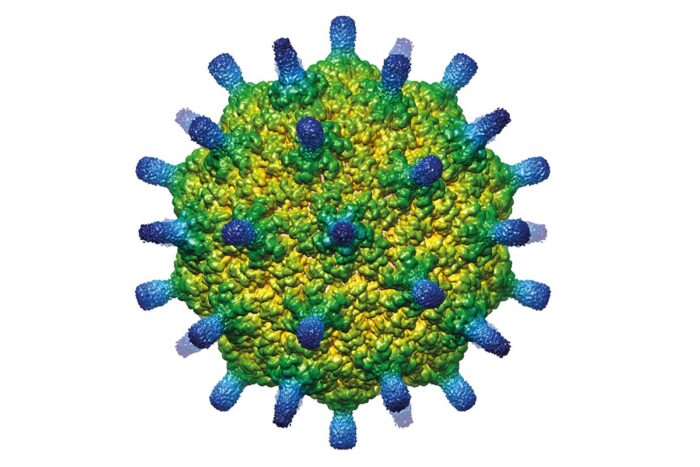The first structure of a domesticated viral-like capsid provides a basis for understanding a novel means of neuronal communication

The neuronal gene Arc plays important roles in neural plasticity, learning and memory-related molecular processes and has been shown to mediate intercellular RNA transfer by forming viral-like capsids. John Briggs’ group has now solved the first structures of Arc capsids, providing a foundation for an improved understanding of learning and consolidation of memories.
The mammalian genome is littered with DNA remnants of viral or transposon origin. Many of these are no longer expressed and can be thought of as a viral ‘fossil record’, but some have also evolved useful functions. Arc is one such gene with a retrotransposon origin that was first incorporated into the DNA of our ancestors more than 250 million years ago. Since then it has been domesticated and repurposed.
Arc’s important role in the brain is highlighted by the fact that mice that do not produce Arc fail to form long-lasting memories. Arc is also implicated in a variety of neurobehavioural and neurodevelopmental disorders, including Alzheimer’s disease and schizophrenia.
What are transposons?
Transposons, or transposable elements, are DNA sequences that can change their position within a genome. They act as selfish genetic elements by enhancing their own duplication at the expense of other genes in the same genome, in the same cell.
Retrotransposons are a type of transposon that copy and paste themselves by first transcribing their DNA into RNA and then reverse transcribing that RNA back to DNA. In this way, retrotransposons are very similar to retroviruses like HIV, but, unlike viruses, were not thought to be able to transfer genetic material between cells. Indeed, modern retroviruses and retrotransposons are thought to have a common ancestor.
Two years ago, a team led by Jason Shepherd’s group at the University of Utah, supported by John’s group, showed that Arc could form viral-like capsids and mediate RNA transfer between neurons, demonstrating a novel form of cellular communication (see this figure from a review of this work). Using single particle cryo-EM, Simon Erlendsson, a researcher in John’s group, has now solved the structures of two forms of Arc found in Drosophila flies.
The Arc capsids were seen to be perfect icosahedral structures, with a high degree of similarity to mature retroviral capsids from viruses like HIV. These structures form closed shells that could protect genetic material to allow transfer of mRNA from one neuron to another. Interestingly, they also have spikes protruding from their surfaces, reminiscent of the spikes used by viruses to bind target cells. These structures provide a foundation on which to develop a greater understanding of the function of Arc, the role of this novel form of viral-like intercellular signalling, and how mutations might cause neurobehavioural disorders.
In addition, it might be possible to exploit the ability of Arc to facilitate intercellular communication as a way to perform viral-like delivery of drugs, as these capsids do not trigger the immune response. Comparison of Arc viral-like capsids with retroviral capsids might also shed light on the evolution of retroviruses and even the evolution of the brain.
The work was funded by the MRC, Novo Nordisk Foundation, National Institute of General Medical Sciences, National Institute of Mental Health, and Chan Zuckerberg Initiative.
Further references:
Structures of virus-like capsids formed by the Drosophila neuronal Arc proteins. Erlendsson, S., Morado, DR., Cullen, HB., Feschotte, C., Shepherd, JD., Briggs, JAG. Nature Neuroscience doi:10.1038/s41593-019-0569-y
John’s group page
Cedric Feschotte’s lab page
Jason Shepherd’s lab page